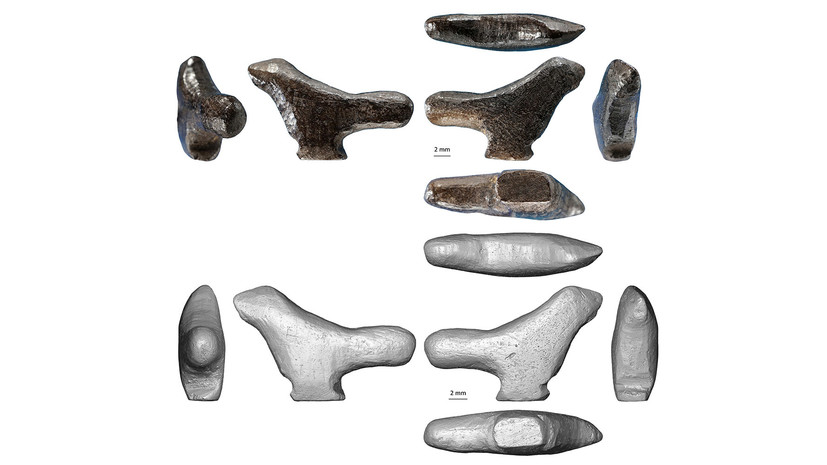Archaeologists from China, France, Norway and Israel have identified the oldest work of art in East Asia, about 13-14 thousand years old. This was reported in the journal PLOS ONE.
Earlier in East Asia, the statuettes of animals made of jade and talchochlorite found near Beijing were considered to be the most ancient statuettes - their age is about 5 thousand years.
A miniature figurine on a pedestal with a picture of a bird carved from burnt bone was discovered at an excavation site in Lingjing, 15 km from Xuchang City (Henan Province, China).
The main author of the study, archaeologist of the University of Shandun Li Zhanyang began the first excavations in Lingjing back in 2005. He found 11 distinctly stratified layers covering the period from 120 thousand years ago to the Bronze Age and discovered that a significant part of the fifth layer related to the Paleolithic was removed during digging a well in 1958.
Fortunately, the excavated soil was found nearby. Having sifted the soil from the dump, the authors of the study found several artifacts, including ceramic shards, burnt animal remains and the same bone figurine in the form of a songbird on a pedestal.
The found artifact was in excellent condition, archaeologists say. As a result of carbon analysis, archaeologists have established the approximate age of the bone figurine used to make it - from 13 to 13.8 thousand years.
As a result of the study, it was possible to prove that even then hunters and gatherers lived on the territory of modern China, who mastered the art of carving on the bone with the help of tools. The figurine was examined using confocal microscopy and microtomography methods to better reveal the carving technique of a prehistoric sculptor. It turned out that production combined four different techniques: abrasion, extrusion, curettage and notching.
Another feature of the find is that all known Paleolithic venus and animal figurines do not have a pedestal, while the base is clearly visible in a Lynxian bird, the researchers note. In their opinion, this indicates an original artistic tradition, whose stylistic and technical analogues were not in the Paleolithic era in other regions of the world.
“This find reflects a distinctive artistic tradition and shifts the dating of birds in Chinese art more than 8.5 thousand years ago. The figure is distinguished by production technology and artistic style from other samples that were discovered in Western Europe and Siberia, ”summed up the archaeologists.
Recall that from the time of the Paleolithic to the present day, mainly abstract cave paintings and prehistoric Venus, which were found in Europe and Siberia, survived. The carved figurine of a man with the head of a cat, which is about 39-40 thousand years old, is considered to be the oldest statuette. The oldest piece of figurative (non-abstract) art today is a cave painting of a hunting scene in a cave of the Indonesian island of Sulawesi, which is about 44 thousand years old.

